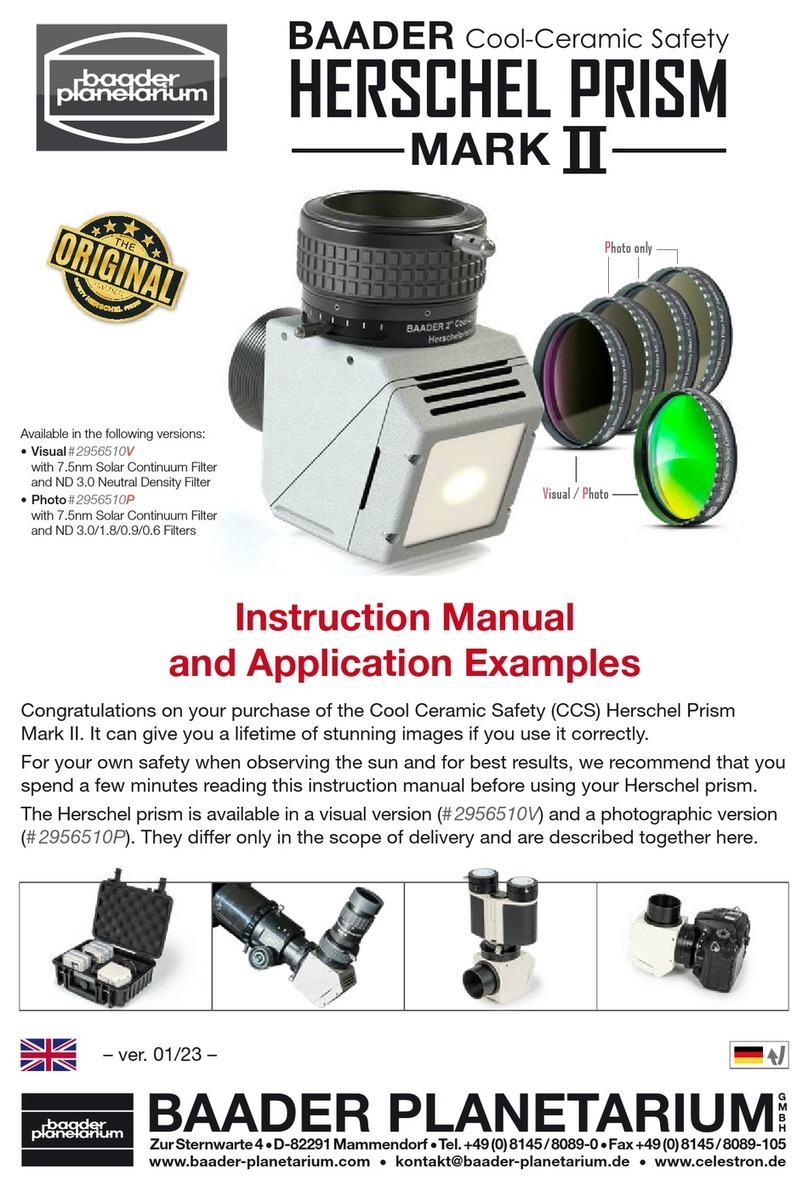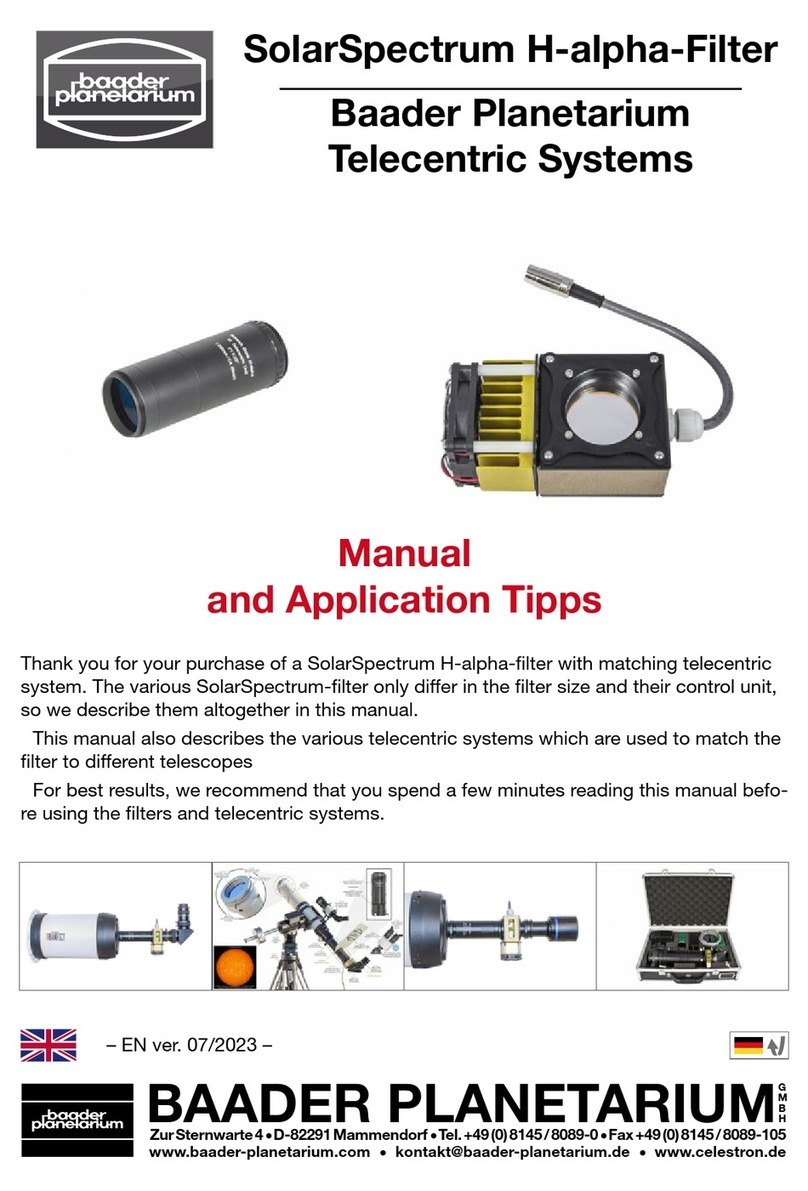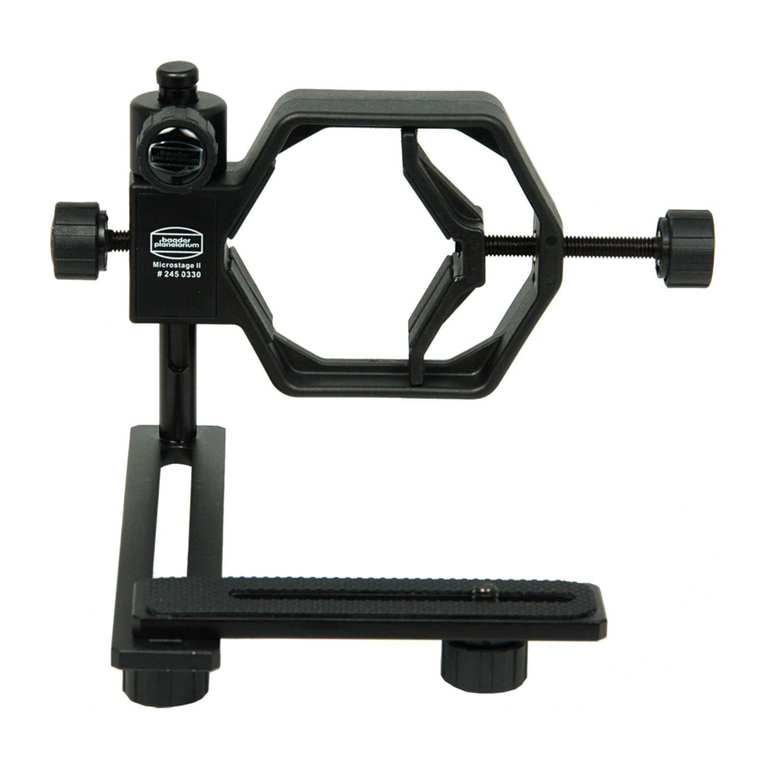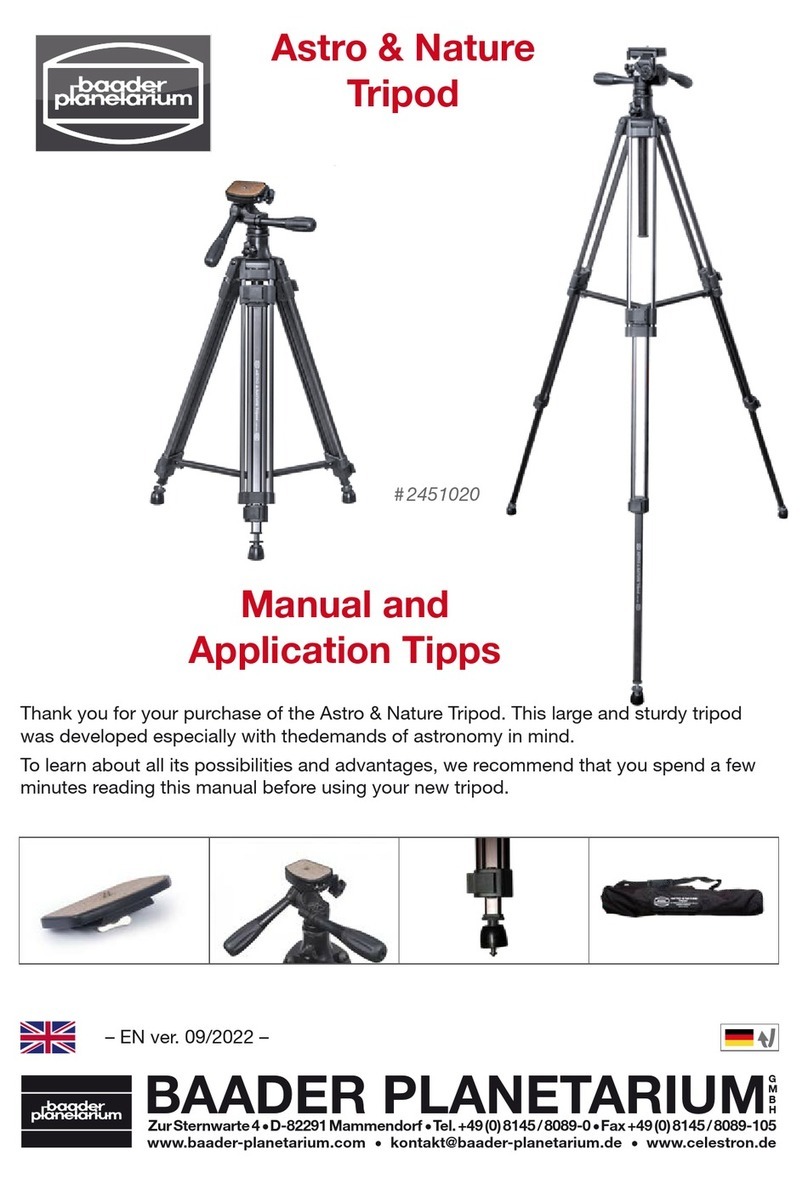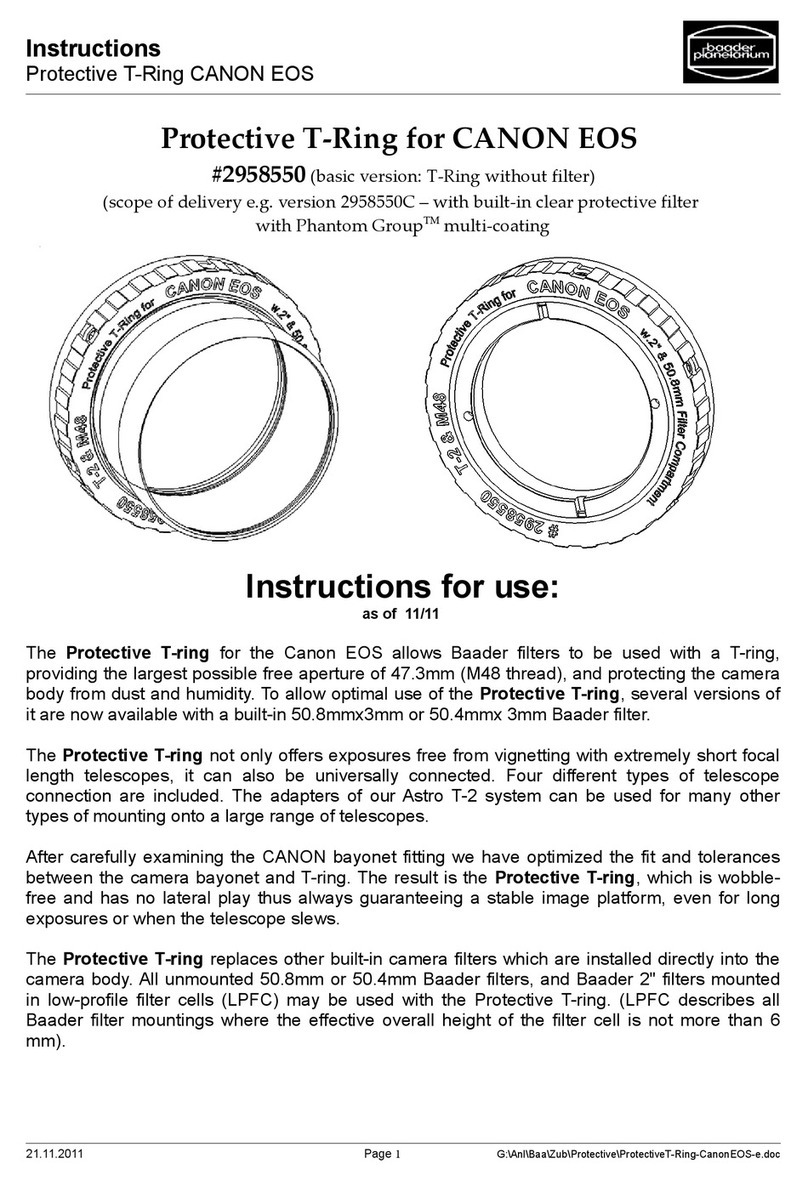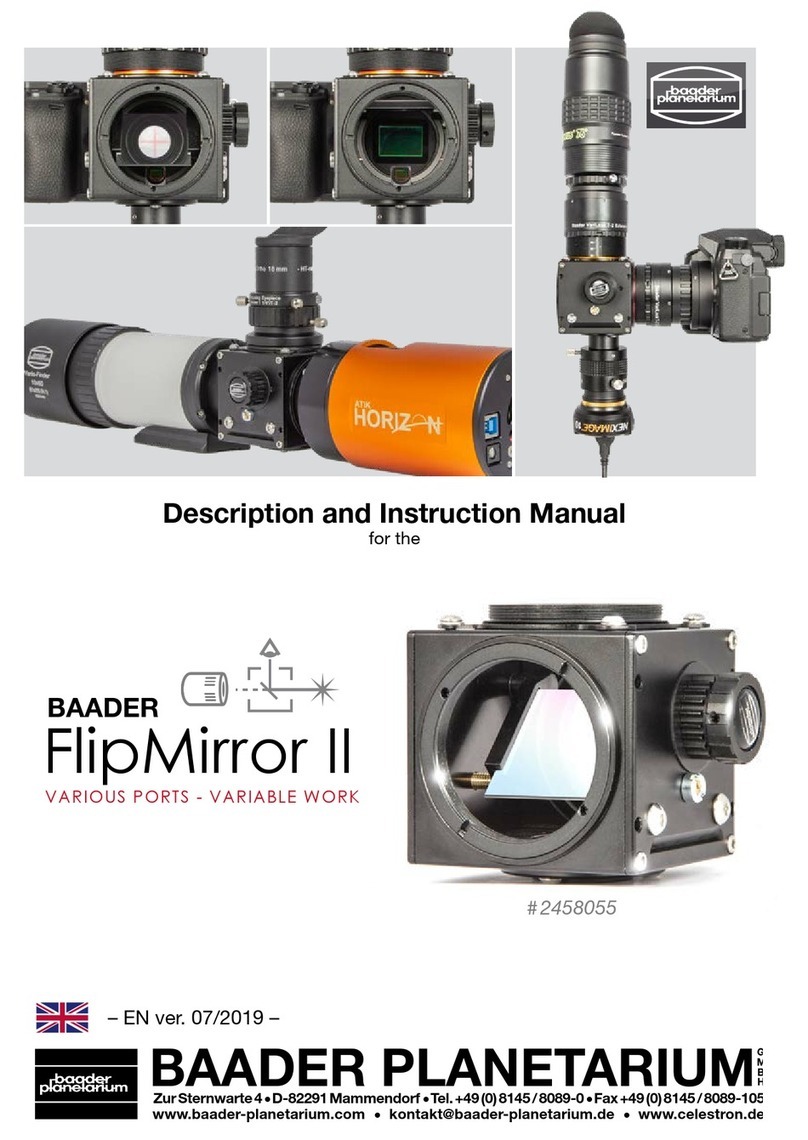
© Baader Planetarium GmbH 3
Baader Filter Changer & Camera Tilter
The Baader FCCT has been specially developed for the Celestron RASA 8. It makes it
possible to mount various QHY cameras on the RASA 8 in such a short way that suf-
cient space remains for a lter slider and a tilt adjustment option. This allows the use
of unmounted 31 mm, 36 mm or 2" (Ø 47.4 mm) lters from Baader Planetarium (these
can be light pollution lters for colour cameras or high-speed narrowband lters for
monochrome cameras). At the same time, it allows much more convenient collimation
of the optics, as the adjustment screws are no longer blocked by the camera, but are
freely accessible on the side of the FCCT.
To make this possible in spite the short back focus of the RASA 8, a somewhat more
complex and very compact adaptation is necessary. Therefore, only some QHY ca-
mera models can be used. A list of currently compatible cameras can be found on the
product page www.baader-planetarium.com/fcct.
The FCCT is only compatible with unmounted lters due to the short backfocus of
the RASA 8. You need a separate lter slider for each lter and these sliders are availa-
ble separately.
For the adaptation, the connecting ange of the camera must be removed. Depen-
ding on the camera, you will need the FCCT I # 2459070 for QHY cameras with 77mm
diameter (e.g. QHY 174/163/183) or the FCCT II # 2459071 for QHY cameras with 90
mm diameter (e.g. QHY 268/294). The two FCCT models differ both by a different
camera ange ring (with 77 or 90 mm) and by a shorter or longer RASA-side adapter.
Please read these instructions carefully before mounting the FCCT. With the up-
grade set # 2459075, the FCCT I can be converted into the FCCT II for larger cameras,
should you change cameras later.
For other cameras, depending on the backfocus, it is possible to use the Baader
Universal Filter Changer UFC by means of the UFC S70 / RASA 8" telescope adapter
(height: 1.4 mm) # 2459136; however, this does not offer the possibility of adjusting
the image plane without removing a larger camera, if necessary, if the diameter of the
selected camera covers the adjustment screws of the telescope.
